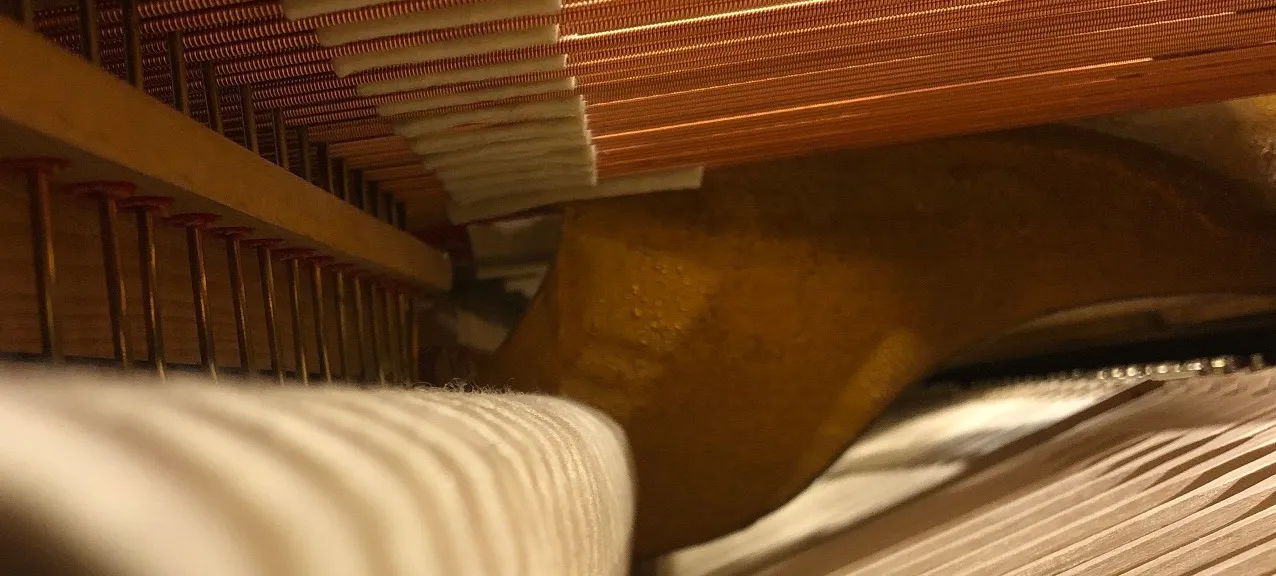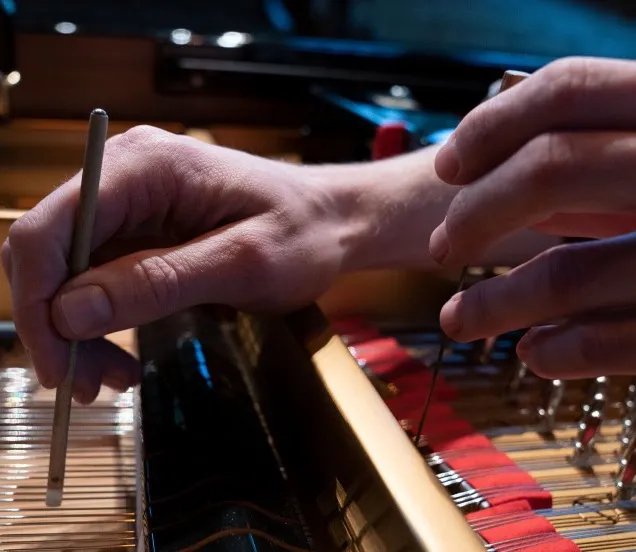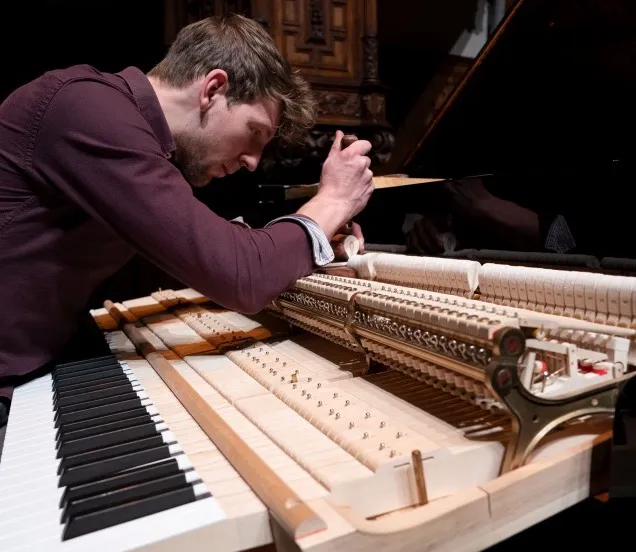The whole piano or grand piano must have the same tone hardness. When hardness is equalised, you get a balanced sound. Often, a technician will then consult with the client about how they want their piano or grand piano to sound. They will prick, listen, chisel, tune and prick again. This customisation/editing ensures that the sound matches your musical preferences as closely as possible.
Such a voicing job can sometimes take days. It all depends on how much the customer allows the technician to do in order to get the best result. These intonation jobs are often done at pianists' homes or in concert halls. It makes no sense to do such an intensive voicing job on a cheaper piano. The quality of a piano or grand piano plays an important role. A high quality instrument lends itself better to a beautiful intonation.
Keep in mind that every piano or grand piano has a limited number of possibilities. It is not the case that we can completely change the sound of a grand piano. Yes, a lot can be done with the sound. But if you are looking for a totally different sound, it might be better to look for another piano or grand piano.






